
How to look for records of... Foreign Office correspondence 1782-1890
How can I view the records covered in this guide?
How many are online?
- None
1. Why use this guide?
Use this guide for advice on how to search for Foreign Office correspondence dating from 1782 to 1890 and now held at The National Archives. You will need to visit us to carry out a search and view the documents. For advice on other types of Foreign Office records see our broader overview guide.
Foreign Office correspondence is a rich source of information on the history of British relations with foreign states and can also provide insights into past domestic issues in foreign countries.
There are tens of thousands of records of general correspondence at The National Archives, ranging from letters, both personal and official, telegrams and despatches, to reports, notes and memos and anything else that was sent from one place or person to another in the business of the Foreign Office.
2. The essential search tools: Foreign Office indexes and registers
To identify Foreign Office correspondence from 1782 to 1890 relevant to a particular country, person or subject area, you will need to use the Foreign Office indexes and registers which make up series FO 605.
These indexes and registers were created and used by the staff of the Foreign Office itself in the 19th century – not all the correspondence to which they refer was sent for preservation to The National Archives so today some index and register entries refer to documents which no longer exist.
The indexes, registers and correspondence have not been digitised and therefore cannot be viewed online. To view them you will need to visit The National Archives or pay for research.
3. How to use the indexes and registers to find correspondence
Follow the steps below to work your way from the indexes to the registers, both on microfilm, and finally to the paper correspondence itself.
Step 1: Identify the relevant index
Use the FO 605 series search in Discovery, our catalogue, and search by country name. This will provide you with an FO 605 reference number for the relevant microfilm roll.
Some countries have several indexes split up chronologically.
Step 2: Identify the relevant entry in the index
Retrieve the relevant microfilm roll from the drawers in the Open Reading Room.
There are often several volumes of indexes per microfilm roll and the volume you need will not necessarily be the first one on the film.
The indexes are arranged alphabetically, with each page divided into two columns, ‘subjects’ and ‘persons’, as shown in this index page for correspondence about China:
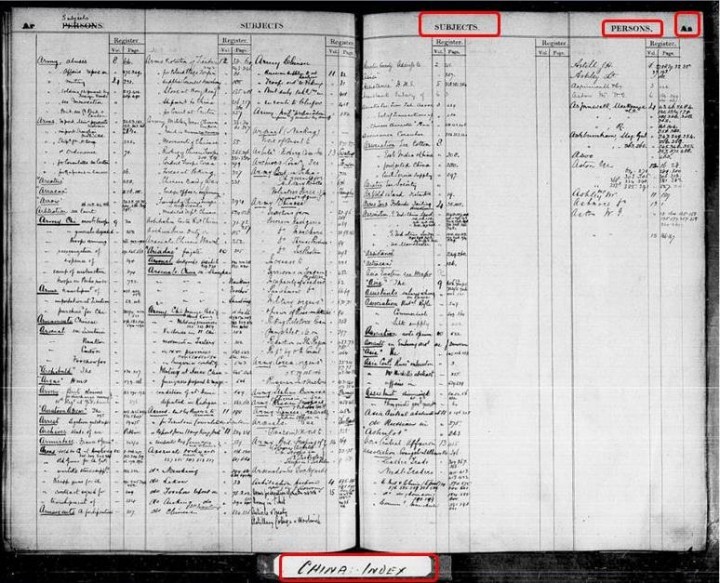
You may have to do some lateral thinking to find your way around the subject index terms used as it is not always obvious how the Foreign Office would have originally categorised a subject.
Once you have identified entries of interest, write down the corresponding registry volume and page numbers, as shown here:
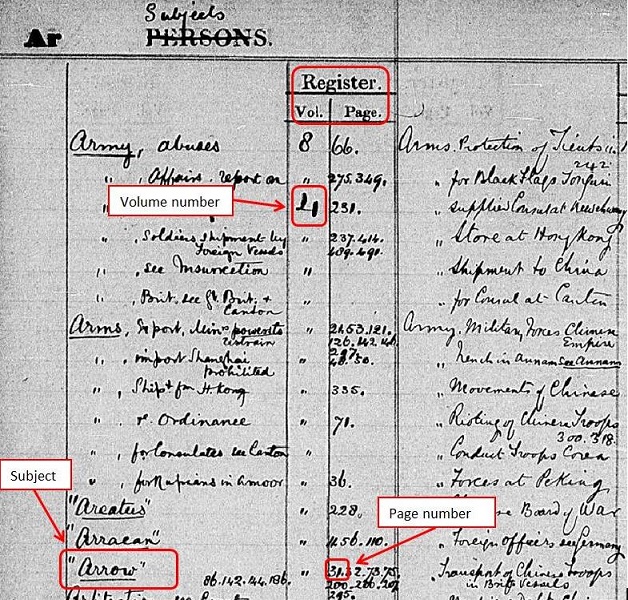
Step 3: Identify the relevant register
Use the FO 605 series search in our online catalogue to search by country name and volume number (abbreviating volume to ‘vol’). This will provide you with another FO 605 reference number for the relevant microfilm roll, as in these search results of a search for Volume 4 of the register for China:
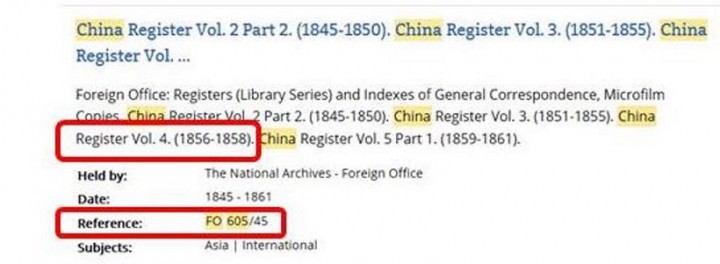
One of the results of an FO 605 series search in Discovery
Step 4: Identify the relevant entry in the register
Retrieve the relevant microfilm roll from the drawers in the Open Reading Room.
Scroll through the microfilm until you reach the relevant volume (the volume number appears at the bottom of the page) and the relevant page (the page number appears in the top corner, above the line).
The register will provide you with:
- The original correspondence volume number
- The despatch number
- The subject
Entries in red ink are for telegrams.
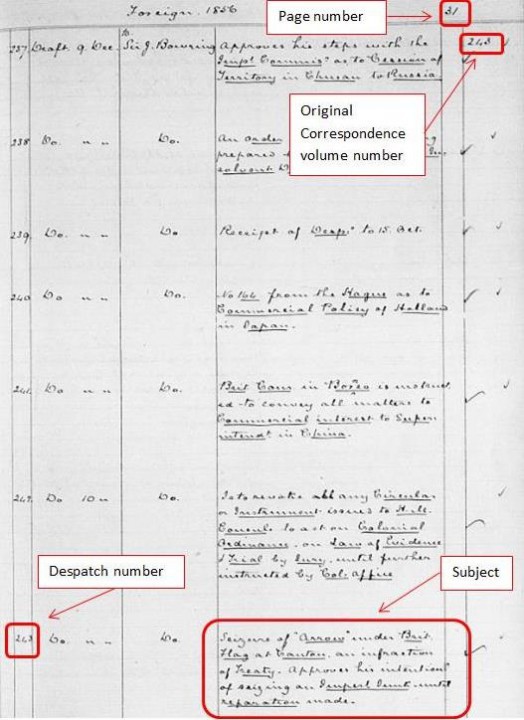
A typical page from a Foreign Office register
Step 5: Find the relevant despatch
You will first need to identify the original correspondence record series for your country. To do so, you can:
- Use the list of correspondence series by country in our catalogue
- Ask for the printed list at the enquiries desks in the Open Reading Room
Once you have established the relevant series (for China, for example, it’s FO 17) you will need to establish the piece number within it – you do this simply by adding the original correspondence volume number to the series reference, separated by a forward slash (thus the full reference for volume 243 of original correspondence about China is FO 17/243).
You can now locate this reference in our online catalogue, as shown here:
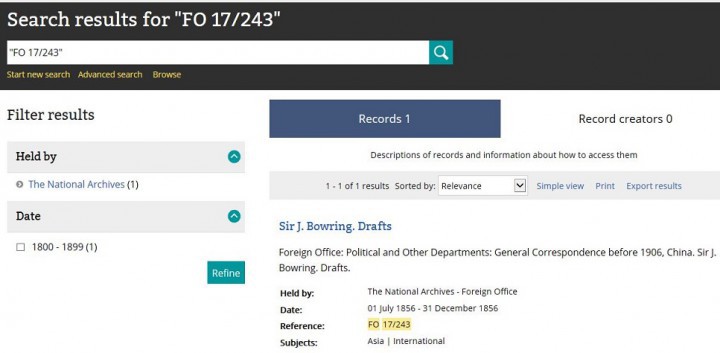
Search results page in Discovery, our online catalogue, showing the result of a search for FO 17/243
By clicking on the title of the relevant volume in your catalogue search results you can order it and look for the despatch within it.
4. Further reading
Some of the publications below may be available to buy from The National Archives’ bookshop. Alternatively, search The National Archives’ library catalogue to see what is available to consult at Kew.
James Cronan and Keith Mitchell (eds.), ‘Foreign Office Records, 1782 to 1986: An index to country series’ (Lists and Index Society, 2017)
Michael Roper, ‘The records of the Foreign Office, 1782-1968′ (Public Record Office Publications, 2002)
L Atherton, ‘Never complain, never explain’: Records of the Foreign Office and State Paper Office 1500-c.1960’, Public Record Office Readers’ Guide No.7 (PRO publications, 1994)
‘The records of the Foreign Office, 1782-1939’, Public Record Office Handbooks No.13 (HMSO, 1969)